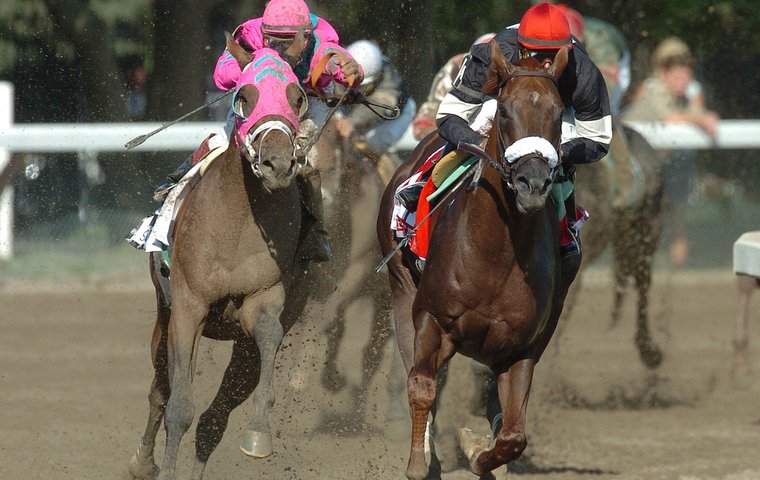
In the latest instalment of his monthly series listing his personal favorites, Jay Hovdey bends his own rules to include a New Yorker who created a lasting impression
The premise of this series has been to share an appreciation of memorable horses witnessed in person through the years by your correspondent. The ‘in person’ part is important, because there is no substitute for the sensations of real-time experience from trackside, rooftop, or deep in the crowd. We cherish those Thoroughbreds who give us flesh-and-blood moments that last a lifetime.
Then there is the exception to the rule. I never saw Commentator race. He ran in the only Breeders’ Cup I missed, in 2007 at Monmouth Park. In June 2008, had I not been so preoccupied by Nick Zito’s Belmont Stakes shocker with Da’ Tara, I could have wandered through his shedrow that evening and at least paid my respects to the real star of the barn.
And had I lingered a week on Long Island, I could have seen Commentator win for the final time in a small stakes event, before his swansong that summer at Saratoga.
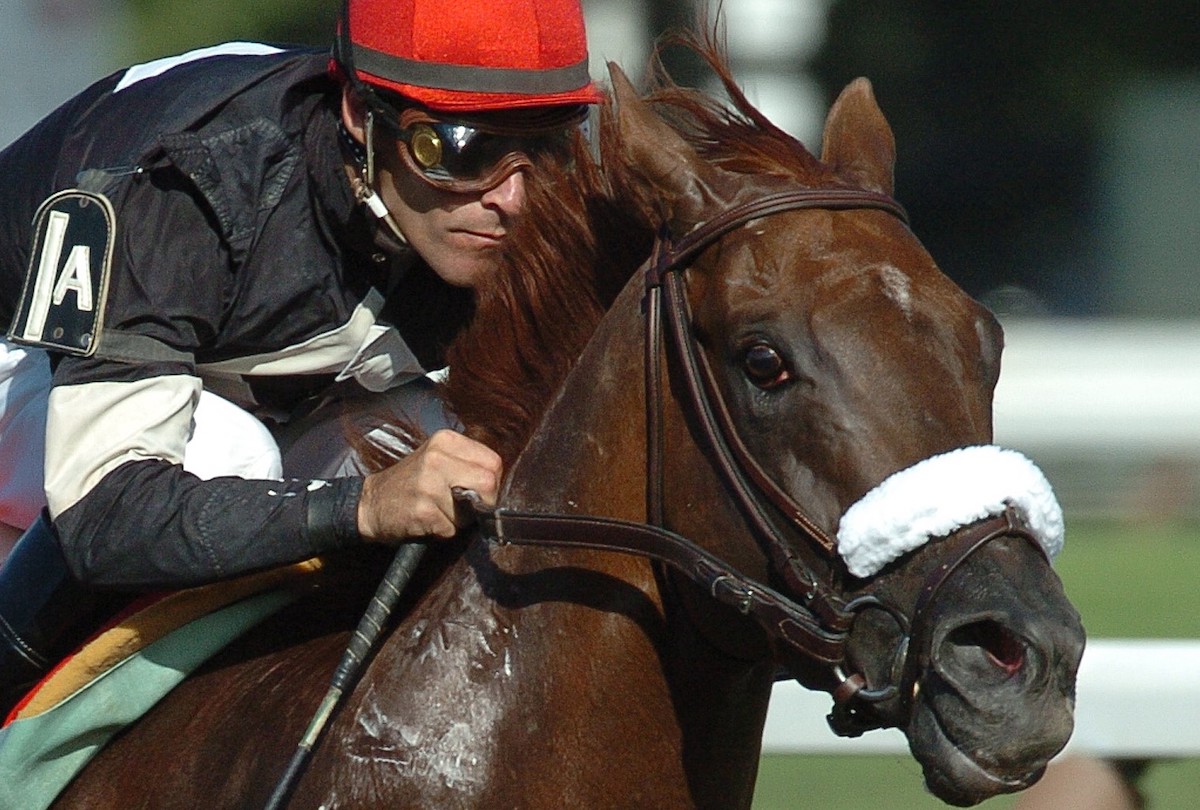 By then, Commentator was a two-time winner of the Whitney Stakes for Carol and Tracy Farmer and a bonafide celebrity among New Yorkers, who treasured their aging, home grown gelding as a symbol of all things fast and furious.
By then, Commentator was a two-time winner of the Whitney Stakes for Carol and Tracy Farmer and a bonafide celebrity among New Yorkers, who treasured their aging, home grown gelding as a symbol of all things fast and furious.
Tearaway
Yet, from early on his appeal was universal. Commentator’s tearaway, all-or-nothing approach to competition was just as much in the spirit of the Old West, echoing such California icons as Swaps, Ack Ack, and Native Diver, as well as more contemporary speed demons like Ruhlmann, Siphon, and Bertrando.
Commentator is a son of the Forty Niner stallion Distorted Humor, who went to stud in 1999 for his owner, the Prestonwood Farm of Jack and Art Preston in Versailles, Kentucky. Later that year, he also served a season in Australia. The result was more than 100 named foals hitting the ground in the two hemispheres during 2000.
When Kenny Troutt and Bill Casner closed the deal for the purchase of Prestonwood in early 2000, Distorted Humor came with the package. Henceforth, the stallion did business under the banner of WinStar Farm, and those first 100-plus foals included such two-year-old stakes winners of 2002 as Humorous Lady, Awesome Humor, and Crackup, along with the future Kentucky Derby and Preakness winner Funny Cide.
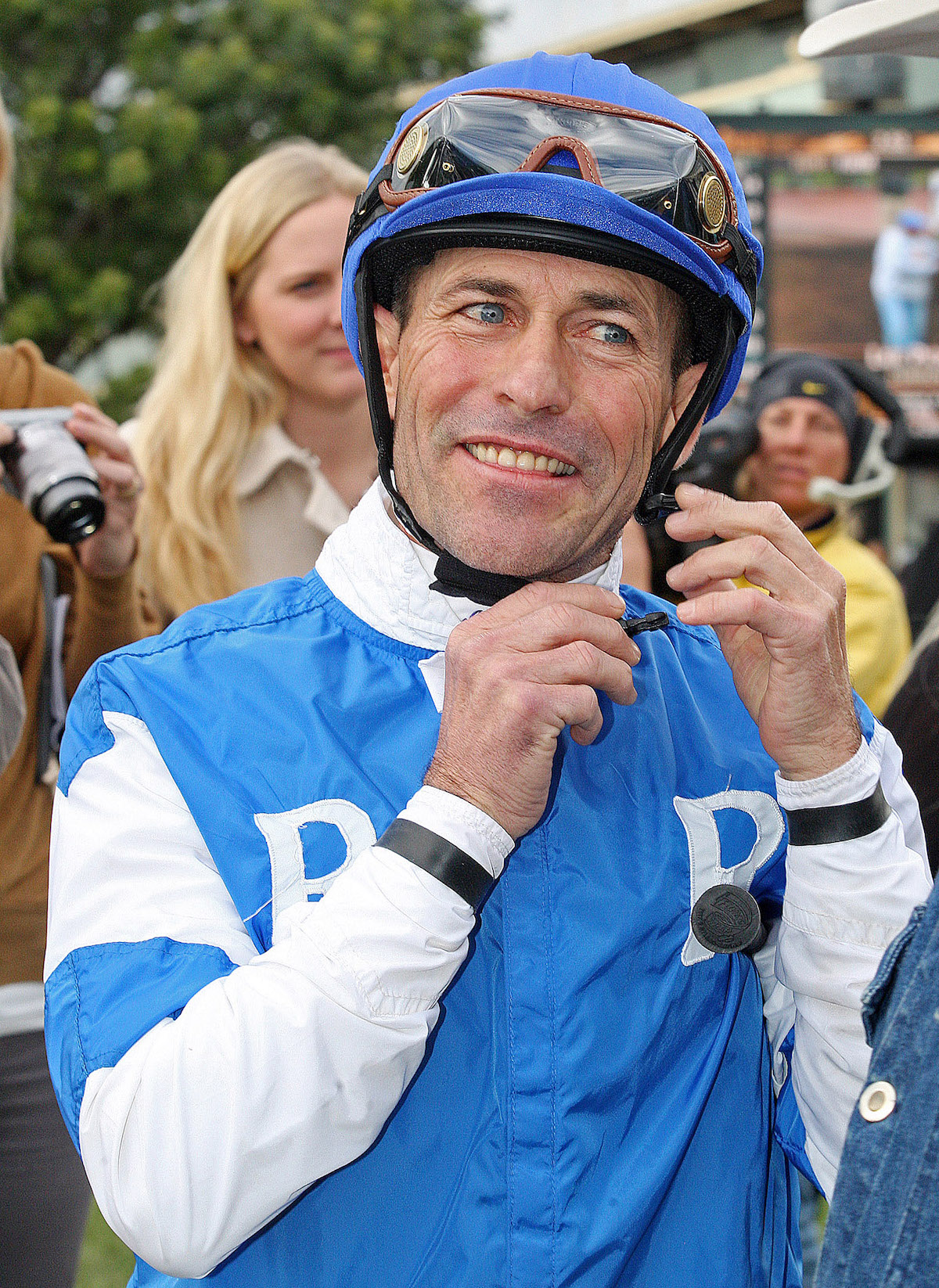 Commentator’s dam is Outsource, a daughter of Storm Bird who comes from a direct female family bereft of racing accomplishments.
Commentator’s dam is Outsource, a daughter of Storm Bird who comes from a direct female family bereft of racing accomplishments.
Quality offspring
The first four dams in the lineage amassed exactly one start among them. It fell to Quite Honestly, a daughter of Believe It foaled in 1982, to generate the kind of quality offspring that could help explain a horse like Commentator.
Quite Honestly was the only named foal of the unraced Cornish Prince mare Tesao. Unraced and bred at age three, Quite Honestly was a broodmare jewel from the start.
Her first foal, Hot Novel, was a graded stakes winner who produced the multi-millionaire Behrens. Quite Honestly’s sons included the stakes-placed sprinter Makinanhonestbuck and graded stakes winner Legislator.
In 1992, Quite Honestly produced a filly, later named True Grit, to the cover of Woodman. Keeping with the family tradition, True Grit started only once and did not win. Her first foal was Cogburn, a minor stakes winner who placed in the Jersey Derby.
Outsource, by Storm Bird, was True Grit’s second foal, bred in Kentucky by Sam and Jo Pollack, who sold her as a freshly-turned yearling in January of 1999 to Michael Martinez for $14,000.
Outsource was undersized and never raced. At two, she was sent to second-year stallion Distorted Humor, who stood initially for $20,000. On March 8, 2001, Outsource celebrated her third birthday, then on March 27, she gave birth to her first foal, a chestnut colt with white between his eyes, just like his sire. Commentator had arrived.
 As for that sire, Distorted Humor was a good racehorse and on occasion very fast. At three he finished third in a power-packed version of the King’s Bishop Stakes at Saratoga and narrowly missed in the Fayette Handicap at Keeneland against older horses. At four he won the Salvator Mile by 5½ lengths, getting the distance in a smart 1:36 while geared down at the end by Julie Krone.
As for that sire, Distorted Humor was a good racehorse and on occasion very fast. At three he finished third in a power-packed version of the King’s Bishop Stakes at Saratoga and narrowly missed in the Fayette Handicap at Keeneland against older horses. At four he won the Salvator Mile by 5½ lengths, getting the distance in a smart 1:36 while geared down at the end by Julie Krone.
“He was a beautiful horse,” Krone said. “Arched his neck going to the post. And very serious about his job.”
At five, Distorted Humor came out firing with victories in the Commonwealth Stakes at Keeneland and the Churchill Downs Handicap. Gary Stevens was aboard for trainer Elliott Walden in both of those seven-furlong events.
“He was built like a Thoroughbred Quarter Horse,” Stevens said. “Big, strong, and very, very quick. He passed that along to Commentator.”
How would Gary know? Seven years after his score aboard Distorted Humor at Churchill Downs, Stevens found himself going postward in the 2005 Whitney on Commentator, in their first of two collaborations.
How far could he stretch his speed?
Faced with Saint Liam, who at the time was top dog among older males in North America, Commentator had his work cut out. Saint Liam was odds-on in the tote, and Commentator was 3-1, same as stablemate Sir Shackleton. The question was clear: how far could Commentator stretch his speed and withstand the predictable challenge from Saint Liam?
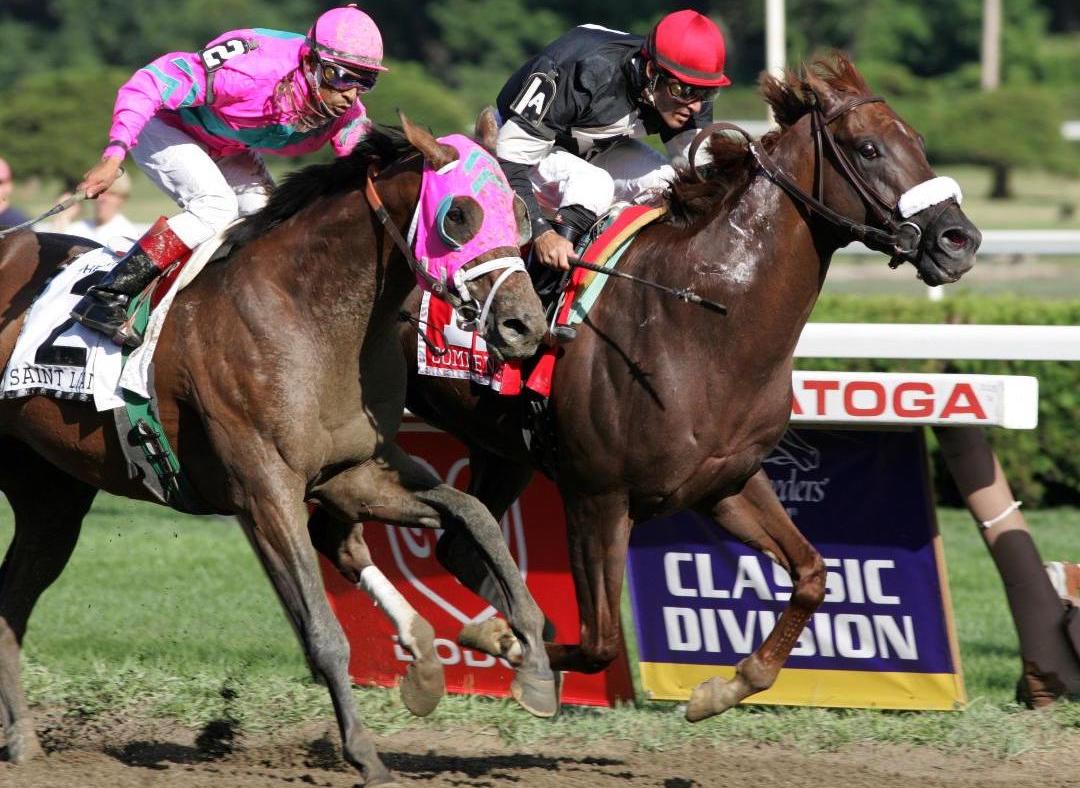 “I found that Commentator would go as slow as you wanted him to go, as long as he wasn’t under pressure,” Stevens said. “The favorite was underestimating him, I think, which was a mistake. I was smiling all the way down the backside.”
“I found that Commentator would go as slow as you wanted him to go, as long as he wasn’t under pressure,” Stevens said. “The favorite was underestimating him, I think, which was a mistake. I was smiling all the way down the backside.”
Flying solo, Commentator was clicking off quarters of about 23 seconds through the first six of the Whitney’s nine furlongs on the deepish Saratoga strip. Stevens was getting a warm and cozy feeling of déjà vu.
“It was very much a Winning Colors, One Dreamer situation,” Stevens said, harking back to his front-running dazzlers in the Kentucky Derby and Breeders’ Cup Distaff.
“Let’s say you’ve got a nice lead approaching the three-and-a-half pole,” Stevens said. “The guys behind me kick into gear to try and make up the difference, and they think they’re doing good. But from the three-and-a-half to the three-eighths pole, I’m just cruising. Then all of a sudden I hit the afterburners, and that kind of jerks the heart out of them.”
Saint Liam, though, was all heart and closed with a vengeance. But Stevens and Commentator had the favorite measured. At the finish, it was Commentator by a neck, with Sir Shackleton nine lengths back in third.
The Whitney put Commentator on the map. To that point he had raced seven times, winning his first five starts as a three-year-old in 2006 by a combined 42 lengths. Zito wasn’t sure what kind of weapon he had, but he knew it was loaded.
“I liked him the first time I saw him at the farm,” Zito said. “And to tell you the truth, it never occurred to me he was a N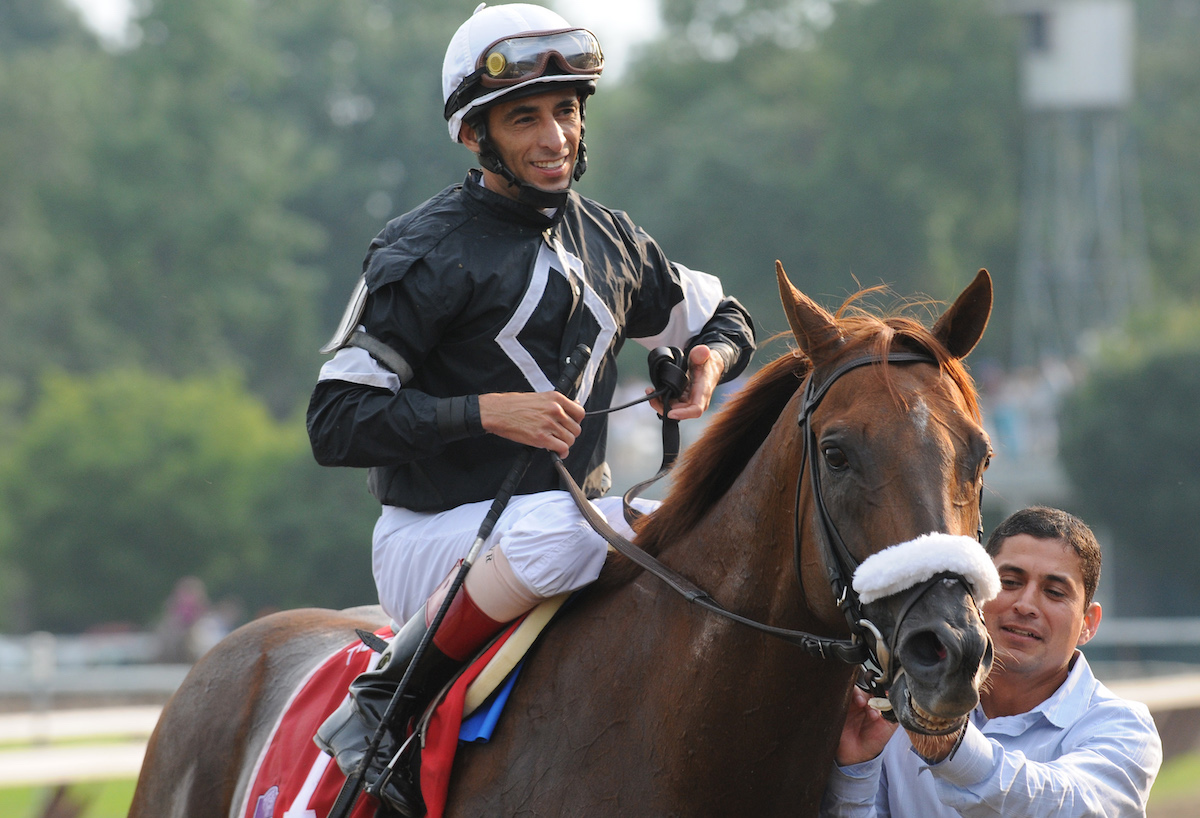 ew York-bred.”
ew York-bred.”
Even Zito, a native New Yorker, labored under the impression that regional breeding programs (read ‘not Kentucky’) were second rate.
For the most part, the impression was correct. Horses who carried the labels of California, Pennsylvania, Louisiana etc., had to be measurably better to overcome such prejudice.
A racehorse not a stallion
With Commentator there were other issues as well. He had been sold as a weanling for $45,000 and then as a yearling to the Farmers for $135,000. Zito’s prime directive was to make him a racehorse, not a stallion.
“He was kind of rambunctious,” Zito recalled. “He just wanted to be left alone, as in, ‘Don’t mess with me.’ So we had to geld him. And I think if I didn’t geld him, he’s not going to make the races.
“I’m sorry, but he was hard on himself,” Zito went on. “After we gelded him, he was kind of, ‘Just leave me alone and I’ll do my thing.’ I also give his groom, Gustavo Sanchez, a lot of credit for his success.”
Defeating Saint Liam was a game-changer, and winning on the lead in G1 company is never as easy as it looks. Still, it was not until the afternoon of Sept. 10, 2005, that I became a Commentator fan for life.
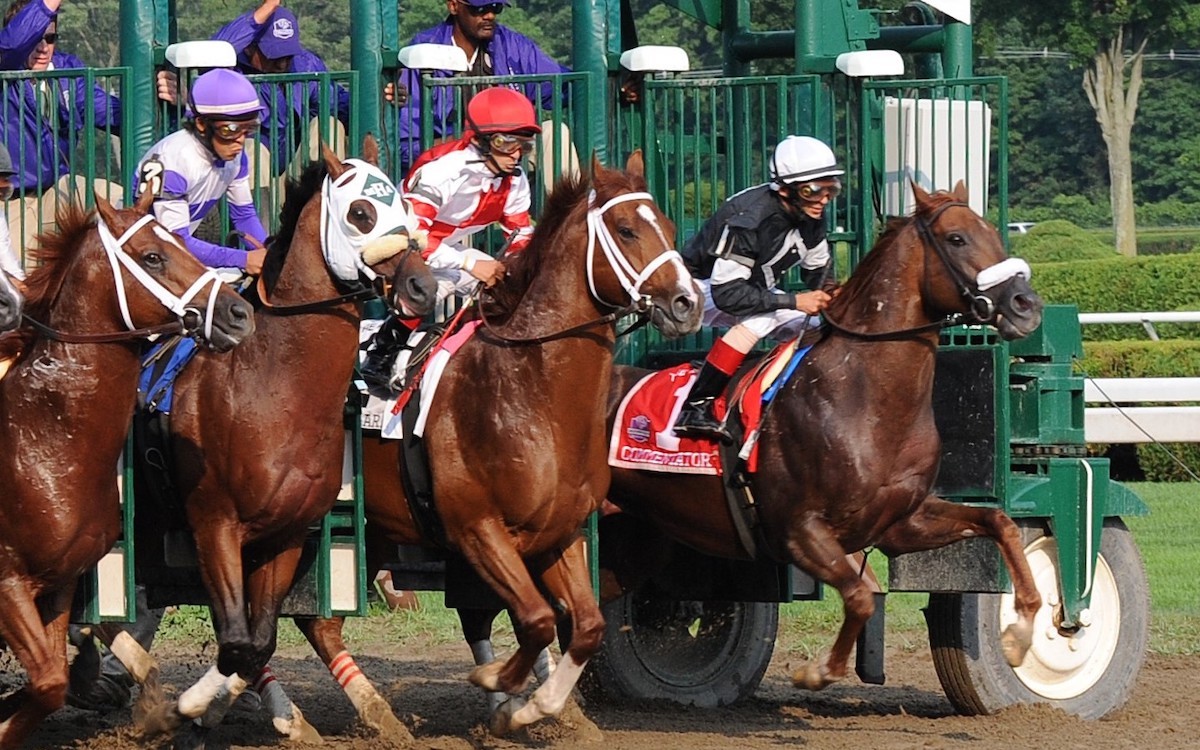 The Woodward Stakes at Belmont Park, at nine furlongs around one turn, was billed as a rematch of the Whitney, complete with just the right mix of salty New York attitude that makes for entertaining rivalries.
The Woodward Stakes at Belmont Park, at nine furlongs around one turn, was billed as a rematch of the Whitney, complete with just the right mix of salty New York attitude that makes for entertaining rivalries.
Richard Dutrow, Jr., the trainer of Saint Liam, complained loudly that Commentator had been allowed to lope along on an easy lead at Saratoga, thus thwarting the resolute finish of his horse.
Dutrow fired his rider, Edgar Prado, who had won five of nine starts aboard Saint Liam, and replaced him with Jerry Bailey.
Undone by rabbits
In addition, Dutrow entered a pair of nondescript sprinters to serve as ‘rabbits’, in hopes of neutralizing Commentator’s perceived front-running advantage. They were named Show Boot and Crafty Player.
“I could see what was happening the minute the entries came out, Stevens said. “One of those horses was basically a claimer coming out of six-furlong races. He had 21-type speed, though.
“The jock came out of there for all he was worth, chirping, smooching at his horse, and the other one was right there with us as well. They lasted for about three-quarters and stopped, but the damage was done. It was very well-orchestrated, and perfectly legal.”
And ugly as sin. Veteran Raul Rojas was on Show Boot, while Rudy Rodriguez, who went on to be Dutrow’s assistant and then a trainer on his own, rode Crafty Player. From the drop of the flag, they surrounded and harassed Stevens, then retreated as Saint Liam came along to easily pass the frazzled Commentator. Even Sir Shackleton, entered for the minor awards, was able to pass his stablemate for second.
As for Dutrow’s rabbits, they clocked in nearly 50 lengths behind third-placed Commentator, officially finishing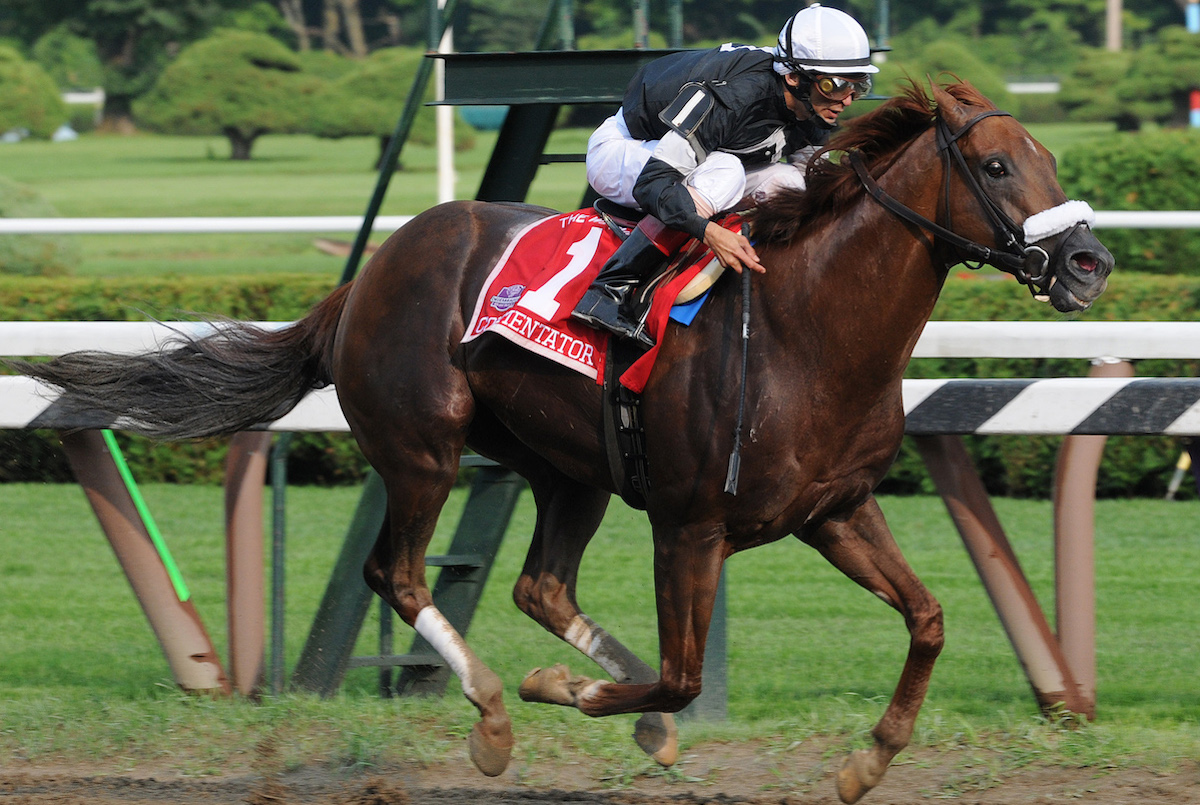 the race at barely a jog in order to reap the $25,000 and $15,000 awards for fourth and fifth.
the race at barely a jog in order to reap the $25,000 and $15,000 awards for fourth and fifth.
“That was awful,” Zito said. “And I know Gary felt terrible. It’s like, you’re walking by some guy, look at him, and you just know know you’re gonna get robbed. Gary hung in there until it became ridiculous, then he took care of his horse.”
To be fair, the use of rabbits – aka ‘pacemakers’ – is a tactical ploy as old as time. Dutrow was walking in the footsteps of great horsemen, among them Eddie Neloy and Frank Whiteley, who availed themselves of high-profile pacemakers for champions like Buckpasser and Damascus.
Even Zito himself had used a pacemaker for his late-closing Derby winner, Strike The Gold, in three major 1992 races for older runners. Each time, Strike The Gold was unable to take advantage of the swift pace set by the rabbit, Loach. In two of those three races, Loach was ridden by Raul Rojas.
Letting him be him
“We tried rating Commentator once in a workout,” Zito said. “You couldn’t do it. You’d break him; you had to let him be him. I always remembered what the great Allen Jerkens said: ‘I don’t know why these jockeys want to disagree with these horses. What are they always arguing?’ He had a point.”
Commentator’s valiant effort in the 2005 Woodward was his last race as a four-year-old. Plagued by quarter cracks, he was given all winter to grow healthier feet and reemerged in July 2006 to win a small stakes at Belmont Park by 6¼ lengths.
Alas, Commentator’s season over as quickly as it had begun when he cooled out from a poor race in the Forego Sta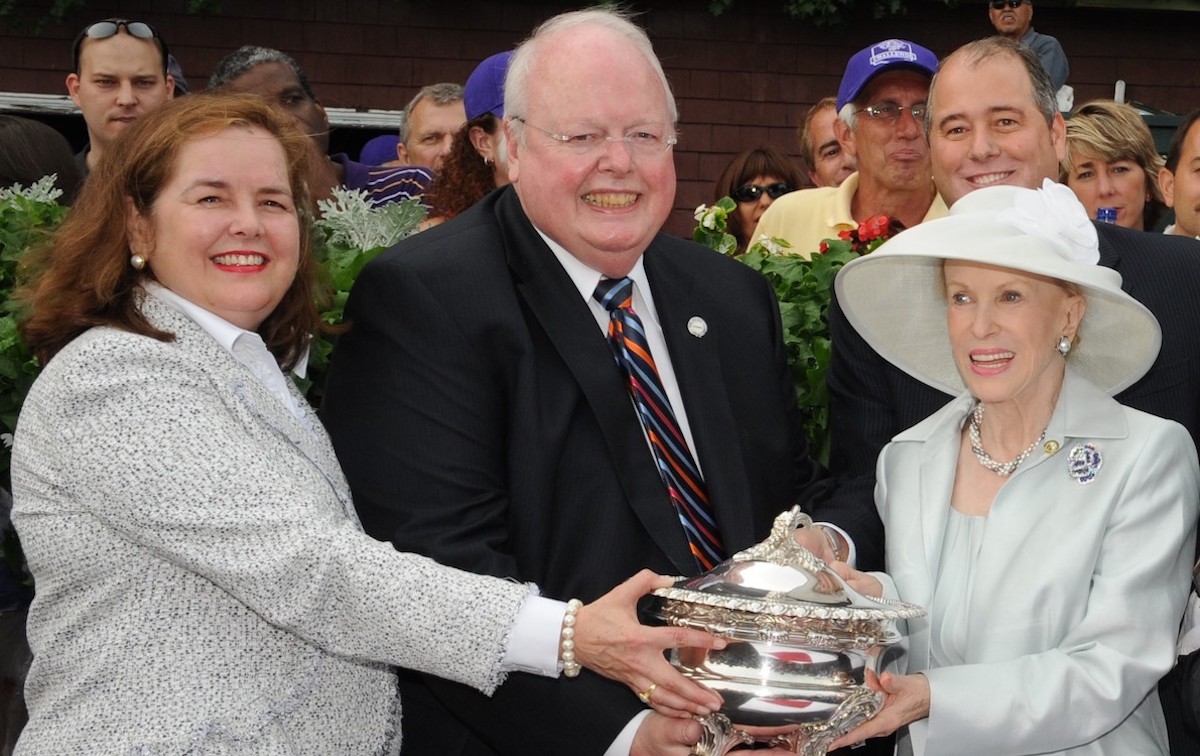 kes at Saratoga with a fractured cannon bone.
kes at Saratoga with a fractured cannon bone.
Commentator healed and returned for a brief 2007 campaign that began well enough, with an 11½-length humiliation of New York competition in a minor stakes at Belmont Park.
Three races later, though, it ended badly in the Breeders’ Cup Sprint, run in a fierce rainstorm over a raging river of a main track at Monmouth Park. Clearly anxious to get the ordeal over with, Commentator broke through the stall gates before the bell.
Joe Bravo kept his cool, and when the racing started he had Commentator in the thick of the early pace. But the mental damage had been done. “On top of that,” Zito said. “I don’t think he ever really like the mud.”
It would have been an ignominious way to end a commendable career, but neither Zito nor his horse was ready to call it quits. Less than three months after the Breeders’ Cup, Commentator was back in character with an allowance win (by 14) and a G2 sprint (by 13¾) at Gulfstream Park. That set him up for a solid second in the Metropolitan Handicap, giving five pounds to the winner.
To suggest a Thoroughbred could be at his peak at age seven is stretching the concept, but such was the case for Commentator. Now being ridden by John Velazquez, he descended on the Saratoga meet like a hero returned from years in exile to win the Whitney Stakes by nearly five lengths, becoming the first two-time winner of the race since Kelso, in 1963. Kelso later added a third.
Fitting tribute
Two months later, Zito took his star to Suffolk Downs in Boston for the Massachusetts Handicap, ostensibly in recognition of management’s efforts to end the slaughter of horses in North America – for which Zito was a passionate campaigner – but also in tribute to equine advocate John Hettinger, who was at the forefront of the anti-slaughter movement. Commentator responded by winning the MassCap by 14 lengths.
“For me, that was one of the greatest races that I had participated in,” Zito said. “John Hettinger had just died. He was one of my mentors and friends, and my longest owner. He gave his life, literally, for horses.
“It was also the last MassCap ever run,” Zito added. “Truly the beginning of the end of great New England racing. It’s important to have Commentator on the list of winners there with Seabiscuit, Whirlaway, Stymie, and Cigar.”
Even though Father Time was pounding on the door, Zito and the Farmers gave Commentator one final turn in the spotlight. They took a swing at the 2009 Charles Town Classic, but the horse was appalled by the tight, turning oval, just six furlongs around. An apologetic Zito provided Commentator with an easy win in a Belmont stakes for New Yorkers, then set sights on a third title in the Whitney.
“That last race, I was sad and proud at the same time,” Zito said. “In 2008, he wins the Whitney for the second time, and he’s seven! How many times do you see that, right? Then in 2009 he’s eight, and he’s in the Whitney again. He’s on the lead, but for whatever reason the scenario didn’t work out right, and he finishes third.”
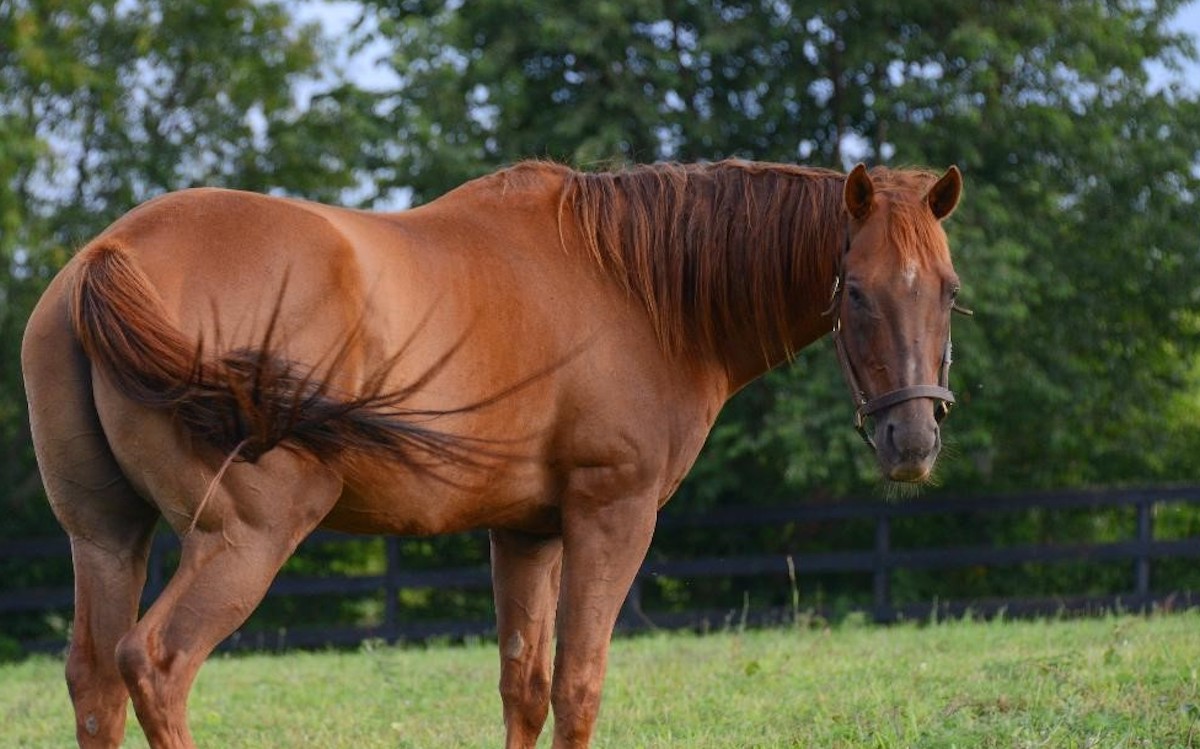 Commentator’s retirement was announced the day after the Whitney. On the final weekend of the 2009 Saratoga meet, he was honored by local dignitaries and led the field postward for the first running of the Commentator Stakes.
Commentator’s retirement was announced the day after the Whitney. On the final weekend of the 2009 Saratoga meet, he was honored by local dignitaries and led the field postward for the first running of the Commentator Stakes.
Then, after unwinding at the Kentucky farm of his owners, Commentator took up residence at Old Friends Equine, near Lexington. In 2012, New York’s favorite son was moved to the Old Friends division at Cabin Creek, just a few miles up State Road 9N from the scene of his greatest moments in Saratoga Springs.
Zito makes a point of visiting his old horse every summer and comes away singing a familiar tune. “I’m convinced,” Zito said recently, “that if he had won a third Whitney at the age of eight – Who does that? Kelso, right? – I would have been able to lead Commentator right across the street and into the Hall of Fame.”
Instead, on the Tuesday following that final Whitney Stakes for Commentator, it was his trainer who walked across Union Avenue to be inducted into the Hall of Fame. And if the impact of his old warrior was unclear, the plaque Zito received that morning was inscribed not only with the names of his two Derby winners, two Belmont winners, his Preakness winner and his three champions.
There also was plenty of room for Commentator.
• Read all Jay Hovdey's features in his Favorite Racehorses series
Precisionist: precocious, durable, versatile – and dripping with charisma
View the latest TRC Global Rankings for horses / jockeys / trainers / sires


